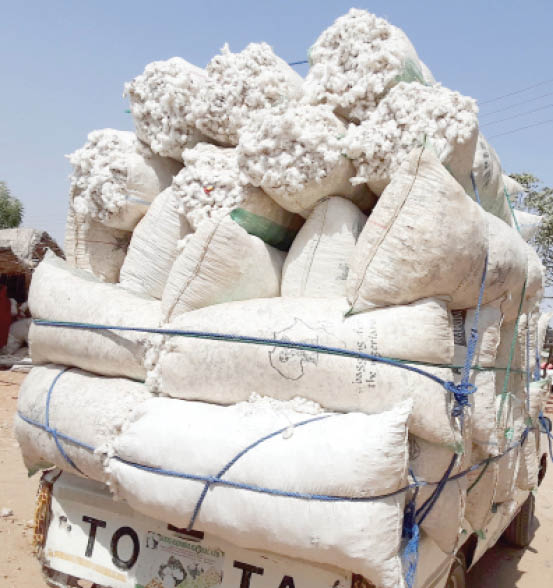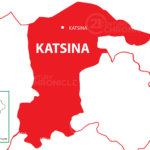Cotton production suffered setback in the last farming season in Katsina State as many farmers battled pest attack, Daily Trust on Sunday reports.
According to cotton farmers and merchants in the state, poor seeds, insecurity and high cost of food items have also de-motivated them from cotton production.
Alhaji Mustapha Mu’azu Beto, a large-scale cotton farmer and the managing director, MM Beto Ginnery Malumfashi, said there were indications that cotton production may drastically drop in the next farming season unless the government and other stakeholders intervened.
“Farmers had in the last farming season suffered lack of suitable improved seeds, a development that culminated into chronic pest attack that mitigated yield. Many of them regretted producing cotton instead of food items, such as sorghum, soybeans, maize or rice, considering their market demand and escalating price,” he said.
Ganduje inaugurates VIP lodge, 1.7km roads in Nasarawa
ICPC will arrest more corrupt Nigerians using digitisation — NITDA
Beto added that they sourced their seeds from India (Mahyco seeds) at the cost of N20,000 per kg because of the high forex rate that was clearly beyond the affordability of local farmers.
On his newly established cotton ginnery, Alhaji Mustapha said, “My dream of creating job opportunities propelled me to install a cotton ginnery that processes 50 tonnes of raw cotton per day, which is equivalent to one truck of cotton lint.”
He further said they were selling lint to Teritex and Whitegold, Kano that would export it to foreign companies.
Another cotton farmer and merchant, Alhaji Sagir Sani Malumfashi, said farmers had spent a lot of money on pesticides but all in vain.
“The persistent pest attack resisted the pesticides applied and most farmers watched helplessly as the pest ravaged their crops,” he said.
He added that some farmers who ought to have produced cotton paid attention to food production in order to rake more revenue and secure food in their respective households.
“Because of the rising market price of grains, farmers are not enticed by the N480,000 rate per tonne of cotton. This is because only 10 bags of maize can give that amount,” he said.
He further said the local cotton variety could give up to 40 per cent of lint while that of Mahyco could best give 35 per cent because it has many seeds.
“Farmers prefer Mahyco variety because it weighs more, while ginners prefer our local variety,” he added.
The national secretary of Cotton Producers and Merchants Association (COPMA), Alhaji Kamilu Sheikh Munir, said Mahyco cotton seeds could only be planted once to get the desired results.
“The second generation seeds of Mahyco attract pests, especially where they are mixed with our local variety. Cameroon and Benin have rejected the seed because of its problem, and instead, improved their local variety from 2.5 to 4 tonnes per hectre,” he said.
Munir added that research institutes like the IAR should borrow a leaf from Cameroon and Benin so that our local seeds can be improved. Cotton production requires stringent rules and supervision from the government to mitigate adulteration of the produce that was reducing its value in international market.
“Katsina State is the cornerstone of cotton production in Nigeria in both the areas of production and merchandise. In 2019 under the federal government’s Anchor Borrowers Programme, 85,000 metric tonnes were produced in Nigeria; and in 2020/2021, the same yield repeated itself, courtesy of the programme. However, in 2022/2023, because there was no government programme supporting crop production, the yield dropped to less than 27,000 metric tonnes,” Alhaji Kamilu.
He further said 60 per cent of the country’s cotton production was from Katsina State, with four major gunneries located in the state.
“Dangote Ginnery Kankara is ginning 40 per cent of cotton produced in Nigeria. WACOT in Funtua is ginning 17 per cent, SunAgro, 14 per cent, while Funtua Textiles has 15 per cent; and it is the only remaining functional textile in northern Nigeria.”
Munir called on the Katsina State Government to include cotton production in its agricultural plans, especially that COPMA, with its 250 registered cotton farmers was ever ready to collaborate with the state government in that regard.
“Major cotton merchants and their gunneries are located in Katsina State; hence they set a benchmark price for the produce,” he said.

 Join Daily Trust WhatsApp Community For Quick Access To News and Happenings Around You.
Join Daily Trust WhatsApp Community For Quick Access To News and Happenings Around You.


